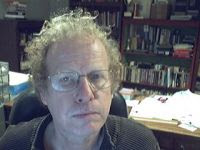What is Organization?
Project three of the basic manual is an exercise on organizing your speech. In it, we learn that a speech has an opening, a body, and a conclusion. A speech that has all three elements, in the correct order, meets a minimal test for organization. A good speech can do better than that – a great speech must. When considering the organization of a speech, a speaker selects a strategy, a sequence of presentation, and looks for opportunities to make internal connections. As evaluators, we should do the same.
Strategy
Beyond the basics of an opening, a body, and a conclusion, organizing a speech requires a strategy. For the most part, this affects the body of a speech. A speech generally has a number of points to make, and organization strategy drives the order they are presented in. Here are some common strategies:
Some presentations require that one piece of information be presented before another. You can teach multiplication as a series of repeated additions, but only if the people you’re teaching understand addition. Negotiators focus on goals and principles before they address details. This strategy – logical order – is appropriate when one element must be established before the next has meaning.
A special case of logical order is chronological order. In some cases, this is vital. If you’re describing how to prepare a food, the sequence of steps and timing are vital – more a matter of content than organization. Although a flashback may be useful at times, most stories follow at lest a rough chronological order.
Another way to connect parts of a speech together is the use of an acronym. I used one – COPE – as the overarching organization for this model. The strength of this method is that it can be widely used. Its weakness is that it can be artificial and not contribute to understanding. I used it in this case because it defines the order of importance in the elements of a speech – content, organization, presentation, and extras.
Finally, a speech can be organized on the basis of a recurring theme or themes. By picking up on a theme at various points in a speech, the speaker ties parts of the speech together and builds interest in his presentation. This may be nothing more than connecting an opening line to a closing line, or it may be far more intricate.
Sequence of Presentation
In some cases, a speech will have a few points to make, and there is no overarching strategy to address the order of presentation. The speaker may decide a relative importance of the points to be made, but not have a reason to put one before the other in the body of the speech.
Given three points to make and no reason to put one before the other, a speech should:
· Make the most importance point first
· Put the third point in the middle
· Save the second most important point for last.
When evaluating, pay attention to the sequence of presentation – can you suggest something better?
Opportunity
As a speech approaches its final form, the strategy and sequence of presentation get pretty well defined. A good speaker will take time to look at the speech for an opportunity to improve its organizational structure. This is fine tuning – does moving an idea help the listener understand something? Can an idea be introduced earlier so it can be reinforced later? Have circumstances in the rest of a speech made part of it irrelevant?
This kind of analysis is almost always a matter of opinion. As such, it’s appropriate material for an evaluator. If you don’t understand why a story was included, say so. If you thought it contributed, say why. Present these as opinions and suggestions.
Praise Based on Organization
It may be difficult to build praise based on organization. A speech that lacks organization is flawed and needs suggestions. A speech that is well organized doesn’t create obvious opportunity for praise. It’s hard to be sincere saying “putting those points in alphabetic order was a great idea!” Even so, here are some possible areas to address.
- The organization was used to set up a surprise that worked well.
- The speaker did something noteworthy in organization.
- There was some feature of organization that you want to reinforce as a teaching point for other listeners.
- Use good organization as evidence of preparation.
Generally, suggestions on organization should focus on how to improve it. Here are some possibilities:
- Would an alternate strategy serve the speech better?
- If the strategy is appropriate, can the order of presentation be improved?
- Are there opportunities to build on the organization of a speech that the speaker didn’t take advantage of?
Conclusion
Organization can be nothing more than an opening, a body, and a conclusion. It can be an outline in any level of detail. It can make a speech the analog of a simple song or a polished symphony. In general, the organization of a speech reflects the preparation of the speaker. You can use a good organization to prase preparation, or poor organization to make a specific suggestion for improvement.
No comments:
Post a Comment